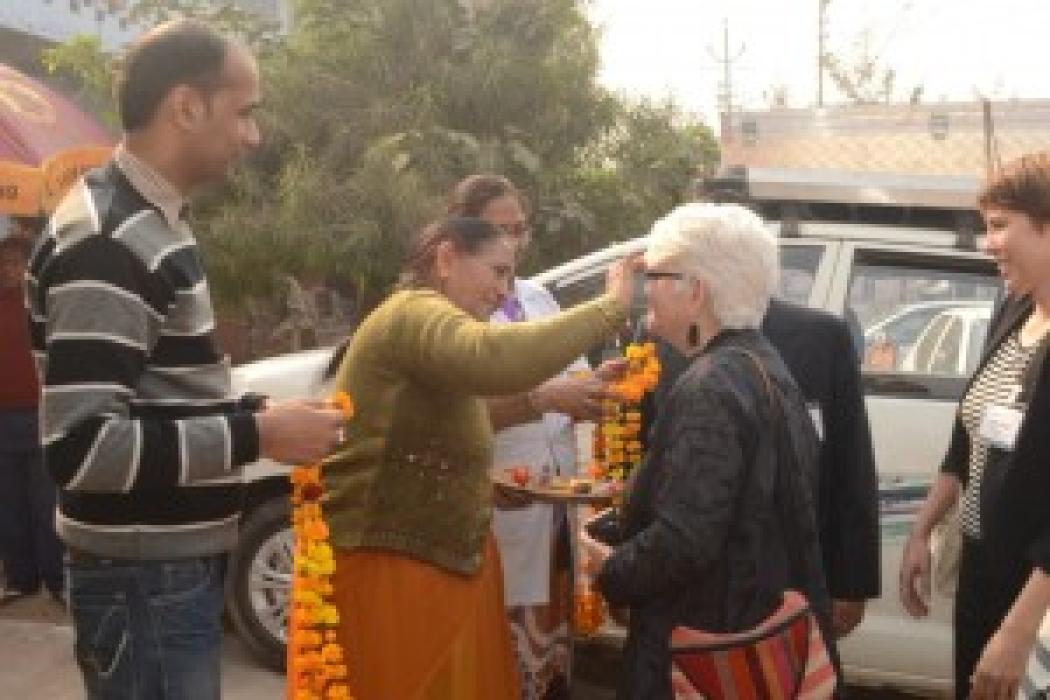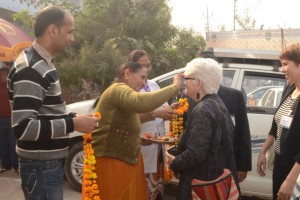Reducing Maternal Mortality in U.S., India & Worldwide Through Knowledge Sharing From the Frontlines

By Debra Bingham, Association of Women's Health, Obstetric & Neonatal Nurses (AWHONN)
In December 2013, AWHONN attended a Merck for Mothers meeting in Agra, India, joining forces with a worldwide team of leaders working to reduce maternal morbidity and mortality in their countries. The location was symbolic, as the Taj Mahal – considered one of the Seven Wonders of the World – was built in Agra as a mausoleum for the favorite wife of Shah Jahan after she died of hemorrhage during the birth of their 14th child. Unfortunately, just outside the gates of this breathtaking structure, many women still face the same fate as Shah Jahan’s beloved, succumbing to maternal hemorrhage. According to Save the Children, there are more maternal deaths in India – 56,000 estimated – than any other country in the world.
Maternal mortality and morbidity is a major problem not just in India but worldwide. Although the World Health Organization reports that maternal mortality was reduced by 47% worldwide from 1990 to 2010, 287,000 women died in 2010 during and following pregnancy and childbirth, most of which could have been prevented.
While most people don’t think the United States has a problem with maternal mortality and morbidity, the hard truth is that rates have been rising as other countries are experiencing declines. Obstetric hemorrhage is the leading cause of maternal deaths in the United States, and an even sadder reality is that 54-93% of these deaths and injuries have been determined to be preventable.
AWHONN believes that all women should have access to efficacious treatments from trained and supported health workers when they are needed regardless of where they call home. It is for these reasons that AWHONN is committed to educating American policymakers about their role in women’s health in the U.S. and abroad. We advocate for reintroduction and passage of the Maternal Health Accountability Act, increased funding for Health Professions and Nursing Workforce Programs, and we participate in coalitions that work toward improved health outcomes for vulnerable populations.
AWHONN’s Postpartum Hemorrhage (PPH) Project is designed to reduce clinician errors associated with obstetric hemorrhage mortality and morbidity by improving clinicians’ recognition of (quantification of blood loss and timely risk assessments), readiness for (policies and procedures and drills), and response (debriefs) to a post-partum hemorrhage event. AWHONN’s quality improvement (QI) panel – composed of physicians, nurses, and AWHONN staff – leads the strategic direction for the project, using a multi-disciplinary skill set to provide a comprehensive approach to any issues hospitals might encounter.
Hospitals in the District of Columbia, Georgia and New Jersey can apply to participate in a multi-hospital, multi-state learning collaborative. Those selected to participate in the learning collaborative will receive expert coaching from the QI panel while working to identify areas of improvement and track process and outcome measures; they also will receive peer coaching and guidance from other participating hospitals. AWHONN will subsequently share the materials developed and lessons learned nationally.
In addition to the PPH Project, AWHONN has launched the “Don’t Rush Me…Go the Full 40” campaign to promote spontaneous labor and encourage women to forego elective inductions and cesareans without medical indication. The overuse of oxytocin leads to preventable uterine atony, which in turn contributes to higher rates of hemorrhage.
Women are the cornerstone of healthy communities, and AWHONN is leading efforts across the United States and sharing our knowledge gained working on the frontlines of care with leaders in other countries so that no woman should needlessly die when giving life.

